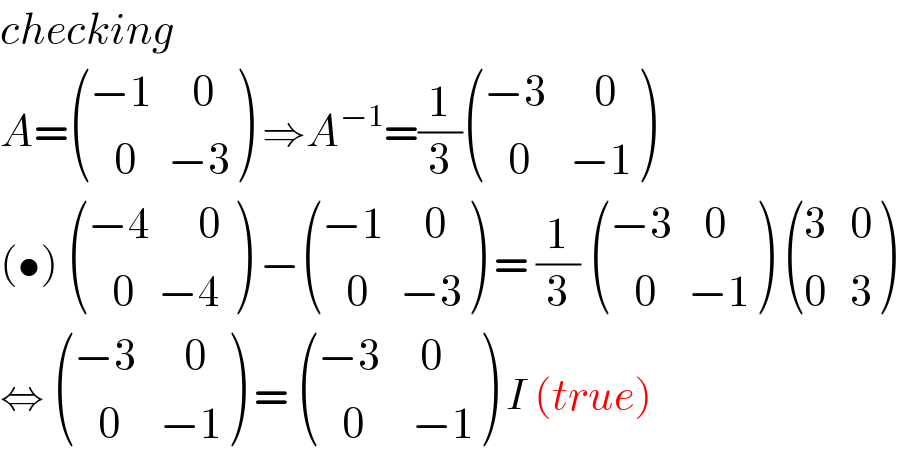
Question and Answers Forum
Previous in Matrices and Determinants Next in Matrices and Determinants
Question Number 125768 by Don08q last updated on 13/Dec/20
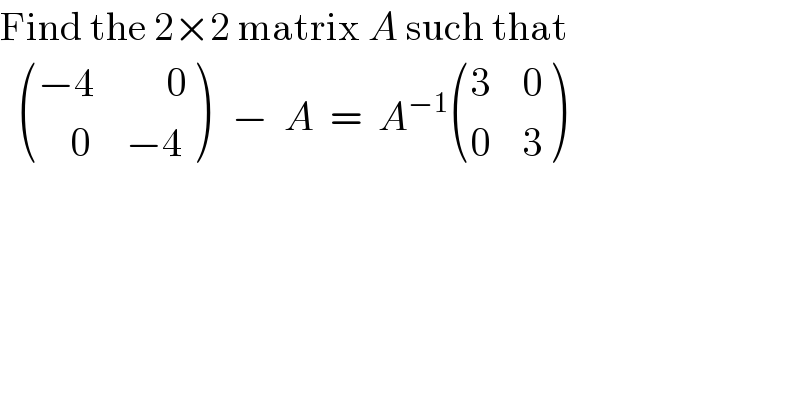
Answered by 676597498 last updated on 13/Dec/20
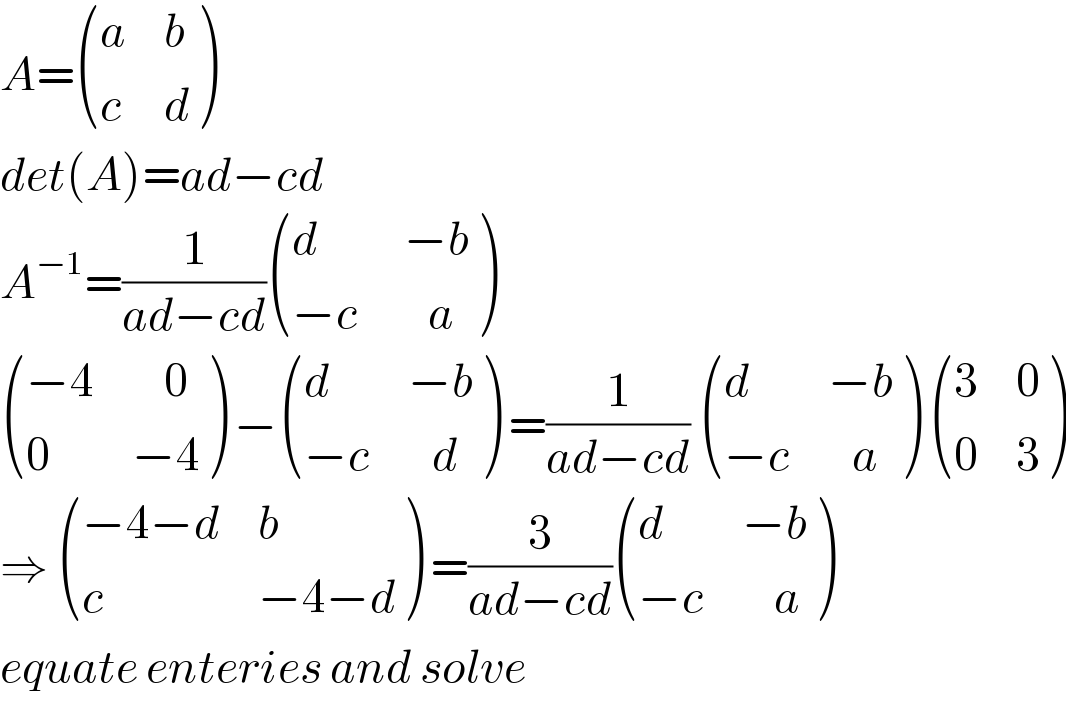
Answered by Olaf last updated on 13/Dec/20
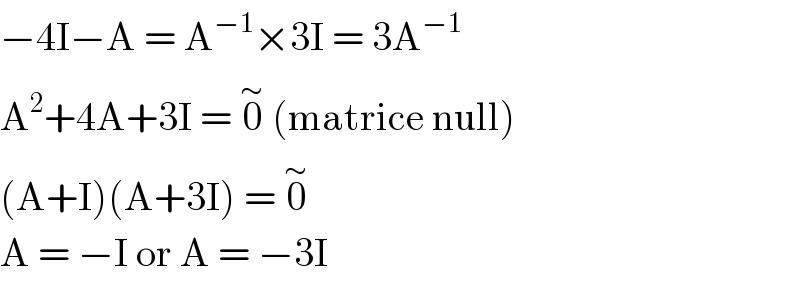
Commented by mindispower last updated on 13/Dec/20

Commented by Olaf last updated on 14/Dec/20
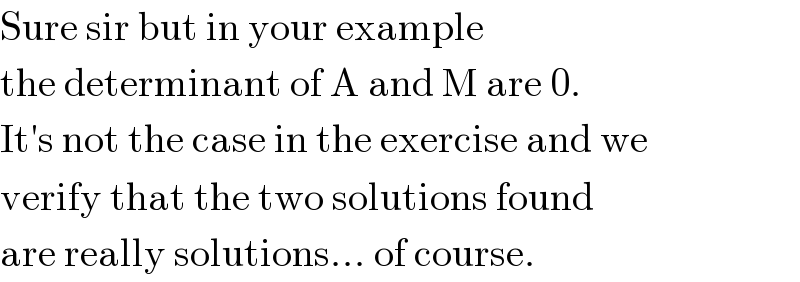
Answered by liberty last updated on 13/Dec/20
![(((a b)),((c d)) ) [ (((−4 0)),(( 0 −4)) )− (((a b)),((c d)) ) ] = (((3 0)),((0 3)) ) (((a b)),((c d)) ) (((−4−a − b)),(( −c −4−d)) ) = (((3 0)),((0 3)) ) (((−a^2 −4a−bc −ab−4b−bd)),((−ac−4c−cd −bc−4d−d^2 )) ) = (((3 0)),((0 3)) ) (•) −ab−4b−bd=0 ; b(a+4+d)=0 → { ((b=0)),((a+d=−4)) :} (••)−ac−4c−cd=0 ; c(a+d+4)=0→ { ((c=0)),((a+d=−4)) :} for b=0 ⇒−a^2 −4a=3 ; a^2 +4a+3=0 (a+1)(a+3)=0→ { ((a=−1 ∧d=−3)),((a=−3 ∧d=−1)) :} A= (((−1 0)),(( 0 −3)) ) or A= (((−3 0)),(( 0 −1)) )](Q125795.png)
Commented by liberty last updated on 13/Dec/20
